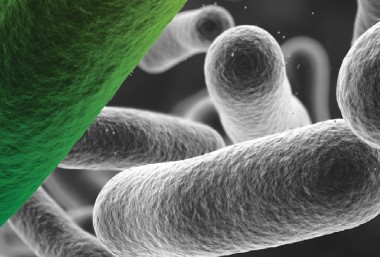The patent-eligibility of claims relating to genes and methods of diagnosis is undergoing continuing scrutiny in the United States and elsewhere.
In the latest development, the Court of Appeals for the Federal Circuit (CAFC) confirmed on 16 August in AMP and others v USPTO and others (the latest round of the Myriad breast cancer diagnostics case ) that:
- claims to isolated nucleic acids are still patent-eligible
- claims directed to comparing or analysing gene sequences were not patent-eligible subject matter.
What does this mean?
- There is continuing disagreement in the senior US judiciary over what subject matter is patent-eligible.
- This disagreement could lead to fundamental changes in established patent-eligibility, particularly in subject matter relevant to biotech.
- Patent applicants must continue to ensure their applications anticipate as best as possible any changes to patent-eligibility.
Isolated DNA is patent-eligible...
The CAFC was asked to reconsider this case in light of the recent US Supreme Court (USSC) decision inMayo v Prometheus. The CAFC was at some pains to point out thatMayodid not control the patent-eligibility of claims to isolated DNA. Rather, eligibility of these claims depended on whether isolated DNA was a product of nature (and therefore ineligible), or a patent-eligible composition of matter.
The CAFC majority held that isolated DNA is not found in nature, and "is not and should not be considered a special case for purposes of patent eligibility under existing law". Here, the majority refuted the lower court's suggestion and the dissenting opinion that the informational content of DNA was its defining characteristic, and one which distinguished it from every other chemical in nature.
In essence, the CAFC majority found that isolated DNA was the product of human ingenuity, and therefore patent-eligible.
…and methods of comparing and analysing sequences are not…
The CAFC then considered Myriad's claims to methods of "comparing" and "analysing" DNA sequences. The CAFC majority observed that these claims were indistinguishable from the diagnostic method claims found to be patent-ineligible by the USSC inMayo. InMayo, the USSC held that claims which related to methods of optimizing the therapeutic efficacy of treatments for an immune-mediated gastrointestinal disorder were actually claims to a law of nature, and thus not patent-eligible subject matter.
The CAFC majority did not specifically applyMayoto the comparing and analysing claims. Instead, the majority reaffirmed their previous finding "in light of the Supreme Court's decision" that Myriad's comparing and analysing claims "include no
transformative steps and cover only patent-ineligible abstract, mental steps."
The last word?
This is unlikely to be the final word on patent-eligibility of claims to isolated DNA. Either a full panel of the CAFC, or the USSC, is likely to again considerAMP.
As a consequence, there is continued uncertainty about exactly what is patentable in the US.
The CAFC dissent considered the informational content of DNA to be the correct focus for assessing patent-eligibility, and observed that this information was essentially unchanged by the process of isolation. Finding guidance in USSC'sMayodecision, the dissent held that isolated DNA was effectively a product of nature, and therefore patent-ineligible.
Will the USSC itself adopt a similar line of reasoning? That remains to be seen. It also remains to be seen whether the USSC will use this case to revisit what is, and is not, sufficient to transform a method claim from an expression of a law of nature into patent eligible subject matter.
What does this mean for applicants?
In the meantime, patent applicants can take steps to mitigate this uncertainty, including:
- putting a reasonable amount of effort into defining novel isolated sequences that would be used in any method of interest - whether a discovery, diagnostic or therapeutic method. For example, defining specific primers, probes, siRNAs, etc, and exemplifying the use of these molecules
- including in patent specifications a discussion of specific applications and examples of the various methods being pursued. For example, describing the specific laboratory methods being used, or treatment outcomes for a patient in a diagnostic method.
In the event the USSC does reconsider AMP, biotech patent applicants can be hopeful of a comprehensive review of its own precedent caselaw - one that brings more certainty to this industry.
